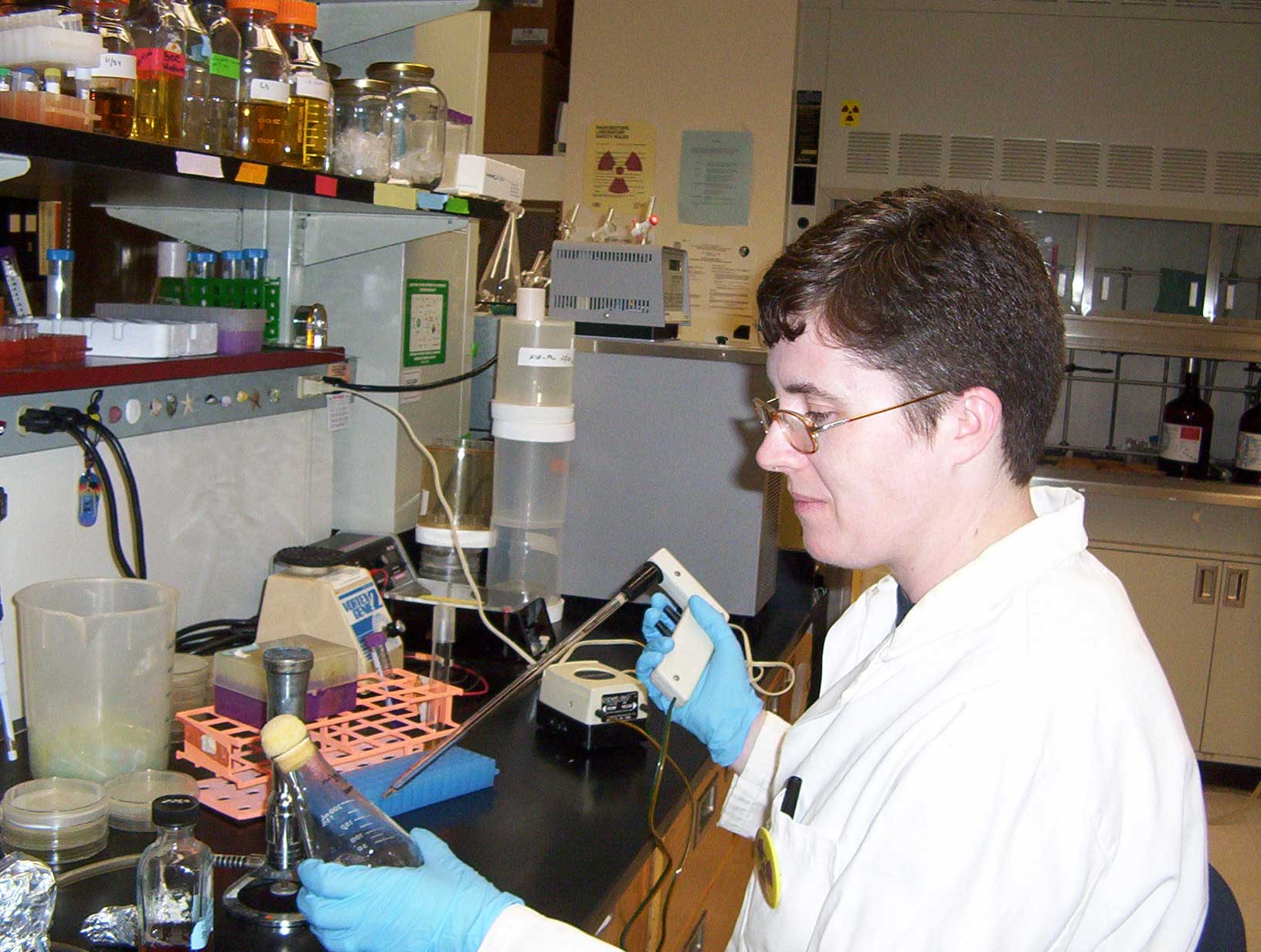Sinead Ni Chadhain's Research Area
Recent Publications
More complete listing can be found on Google Scholar
(* student authors)
Looper, J., A. Cotto, B. Y. Kim, M. K. Lee, M. Liles, S. M. Ní Chadhain, and A. Son. 2013. Microbial community analysis of Deepwater Horizon oil-spill impacted sites along the Gulf coast using functional and phylogenetic markers. Environmental Science: Processes & Impacts. 15:2068-79.
*Schuler, L., Y. Jouanneau, S. M. Ní Chadhain, C. Meyer, G. J. Zylstra, P. Hols, and S. N. Agathos. 2009. Characterization of a ring-hydroxylating dioxygenase from phenanthrene-degrading Sphingomonas sp. strain LH128 able to oxidize benz[a]anthracene. Applied Microbiology and Biotechnology. 83:465-475.
*Callaghan, A. V., B. Wawrik, S. M. Ní Chadhain, L. Y. Young, and G. J. Zylstra. 2008. Anaerobic alkane-degrading strain AK-01 contains two alkylsuccinate synthase genes. Biochemical and Biophysical Research Communications. 366: 142-148.
*Schuler, L., S. M. Ní Chadhain, Y. Jouanneau, C. Meyer, G. J. Zylstra, P. Hols, and S. N. Agathos. 2008. Characterization of a novel angular dioxygenase from fluorene-degrading Sphingomonas sp. strain LB126.Applied and Environmental Microbiology. 74: 1050-1057.
Ní Chadhain, S. M., *E. M. Moritz, E. Kim, and G. J. Zylstra. 2007. Identification, cloning, and characterization of a multicomponent biphenyl dioxygenase from Sphingobium yanoikuyae B1. Journal of Industrial Microbiology and Biotechnology. 34:605-613.
*Poulain, A. J., S. M. Ní Chadhain, P. A. Ariya, M. Amyot, E. Garcia, P. G. C. Campbell, G. J. Zylstra and T. Barkay. 2007. Potential for mercury reduction by microbes in the High Arctic. Applied and Environmental Microbiology. 73: 2230-2328.

B.S. Biology - University of Scranton
Research Interests:
Microbiology/Microbial Ecology, Biodegradation Pathways, Bioremediation
Phone: (251) 460-7522
Email: snichadhain@southalabama.edu


